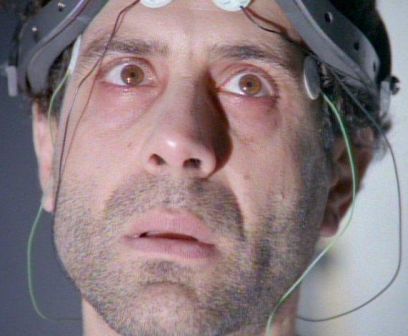Shadows, Benign and Deadly

In the Acts of the Apostles, we read that through God’s grace even the “touch” of Peter’s shadow could heal the sick. Since so many fantasy RPG spells clearly draw at least some inspiration from Jewish and Christian scriptures, why not one more?
Petrine Umbra
Insomuch that they brought forth the sick into the streets, and laid them on beds and couches, that when Peter came his shadow at the least might overshadow any of them, and they might be delivered from their infirmities. (Acts 5:15)
Spell Level: Cleric, 3rd Level
Range: See below
Duration: 10 minutes
By means of this spell, the Cleric transforms his shadow into a conduit for divine power. For the duration of the spell, the Cleric may use the “touch” of his shadow to transmit spells with a range of touch. In low-light conditions, such as provided by candle light, the Cleric’s shadow has a range of 15 feet. In full daylight, this range increases to 45 feet. This spell requires a light source sufficient for the Cleric to cast a shadow in order to function.
*

I’ve been watching The X-Files on Netflix. I watched the series when it first aired. Currently, I’m somewhere in season two at the moment. Some of the episodes don’t hold up well. A few of the stories are little too pat or else a little too confused. For example, season two’s “The Calusari” is kind of a hot mess. Is it a low-rent riff on The Exorcist? Is it an insult aimed at immigrants?
But enough commentary. Let’s snatch up Tony Shaloub and turn him into a creature for Mutant Future:
Shadow Killer
A shadow killer is a strain of mutant human with some most unusual abilities. In most respects, a shadow killer appears to be a Pure Human. Sure, a shadow killer’s demeanor reflects a combination of agitation and exhaustion, and its flesh looks sallow and glistens with what appears to be the sheen of sweat, but a Pure Human who has endured a period of illness and stress might exhibit the same signs. What makes these solitary mutants dangerous are their shadows, which are semi-sentient projections of destructive “dark radiation”.
Many shadow killers exhibit behaviors contrary to their ominous name. They are not killers, but instead are often lonely creatures who think of themselves as cursed by their mutations to always been on the outside looking in. They cannot really take part in society because of the lethality of their shadows, but they still long for some contact with other sentient creatures. Of course, some shadow killers seem to revel in their destructive powers, and it is these individuals that have given shadow killers their fearsome reputation.
In combat, a shadow killer attacks with whatever weapons it has on hand. Also, each round, its semi-sentient shadow is 50% likely to attack a random target within 30 feet. The shadow stretches across the ground, along walls, and so forth in order to reach its target. A successful attack by the shadow inflicts damage as exposure to radiation equal to class 1d6+4 (roll for each attack). A shadow killer can not always control its shadow. If the shadow killer has not killed a creature with its shadow in the past hour, the shadow is 50% likely to attack any creature than approaches within range regardless of the shadow killer’s wishes.
Diffused light or total darkness that negates shadows prevents a shadow killer’s most dangerous, unpredictable attack from functioning.
No. Enc.: 1
Alignment: Any
Movement: 120′ (40′)
Armor Class: Armor type
Hit Dice: 10
Attacks: 1 (50% for 2)
Damage: Weapon type/radiation class 1d6+4
Save: L10
Morale: 8
Hoard Class: XII
XP: 2,400
Mutations: Ultraviolet Vision, Unique (Semi-Sentient Shadow)
